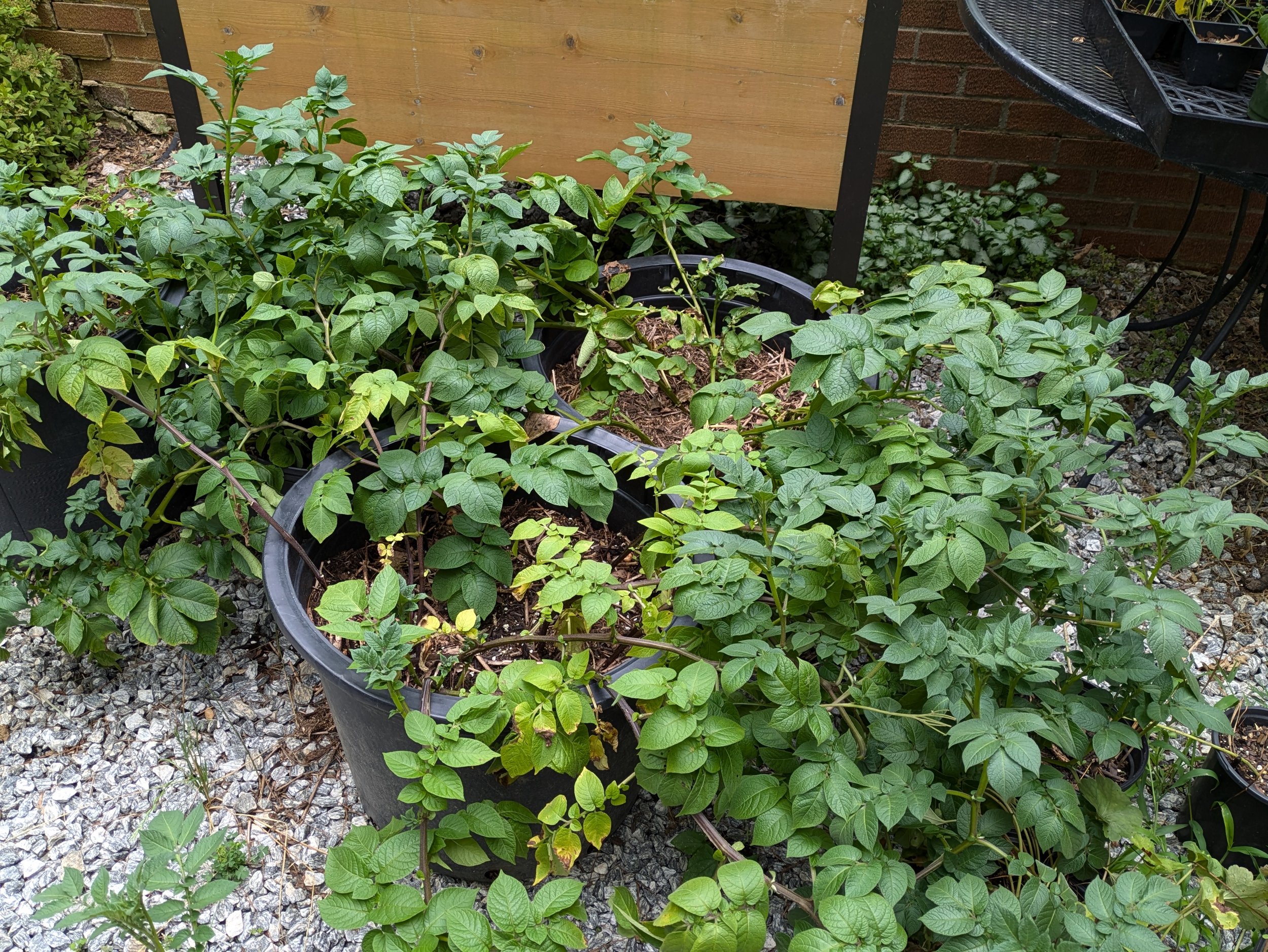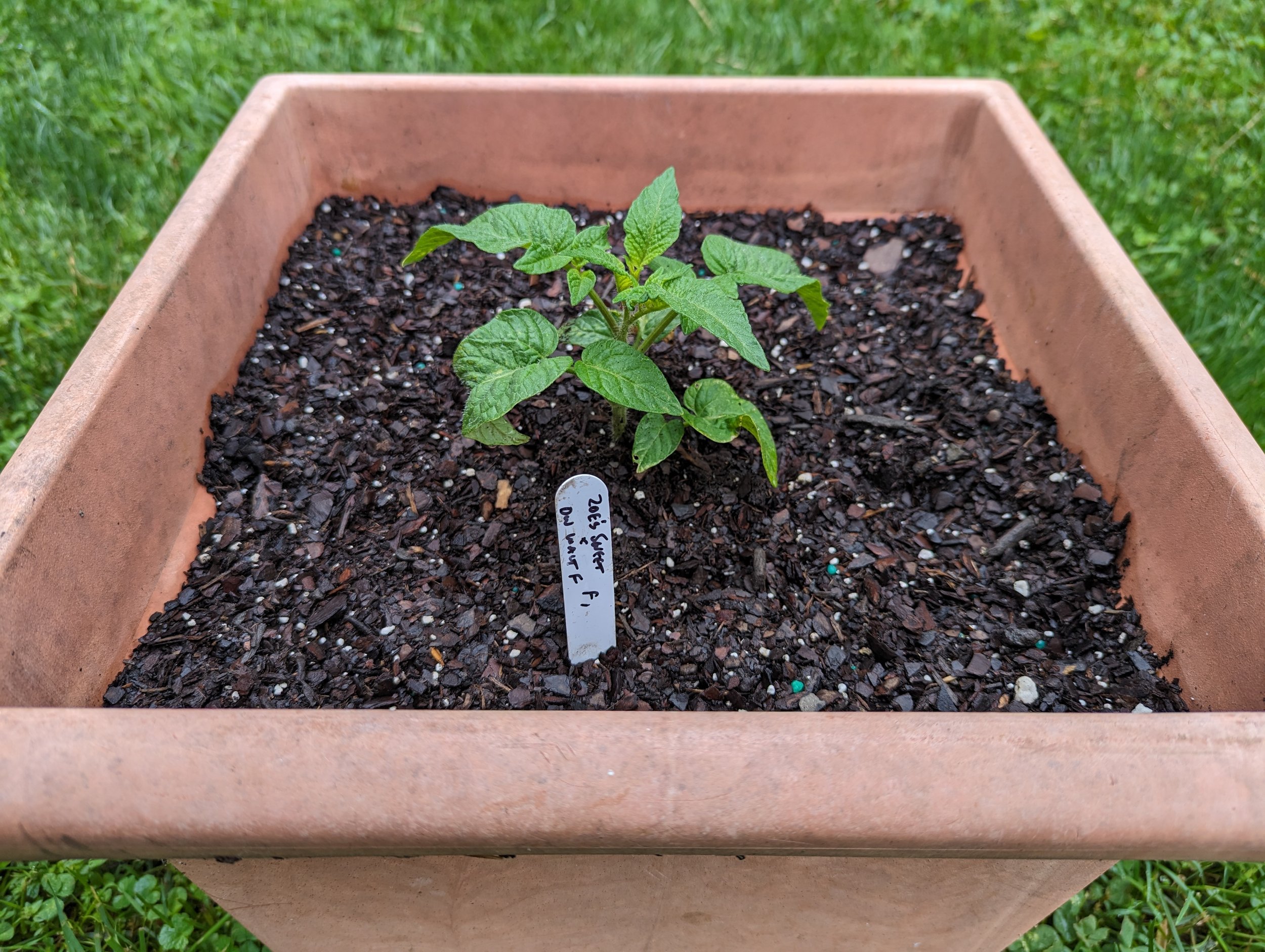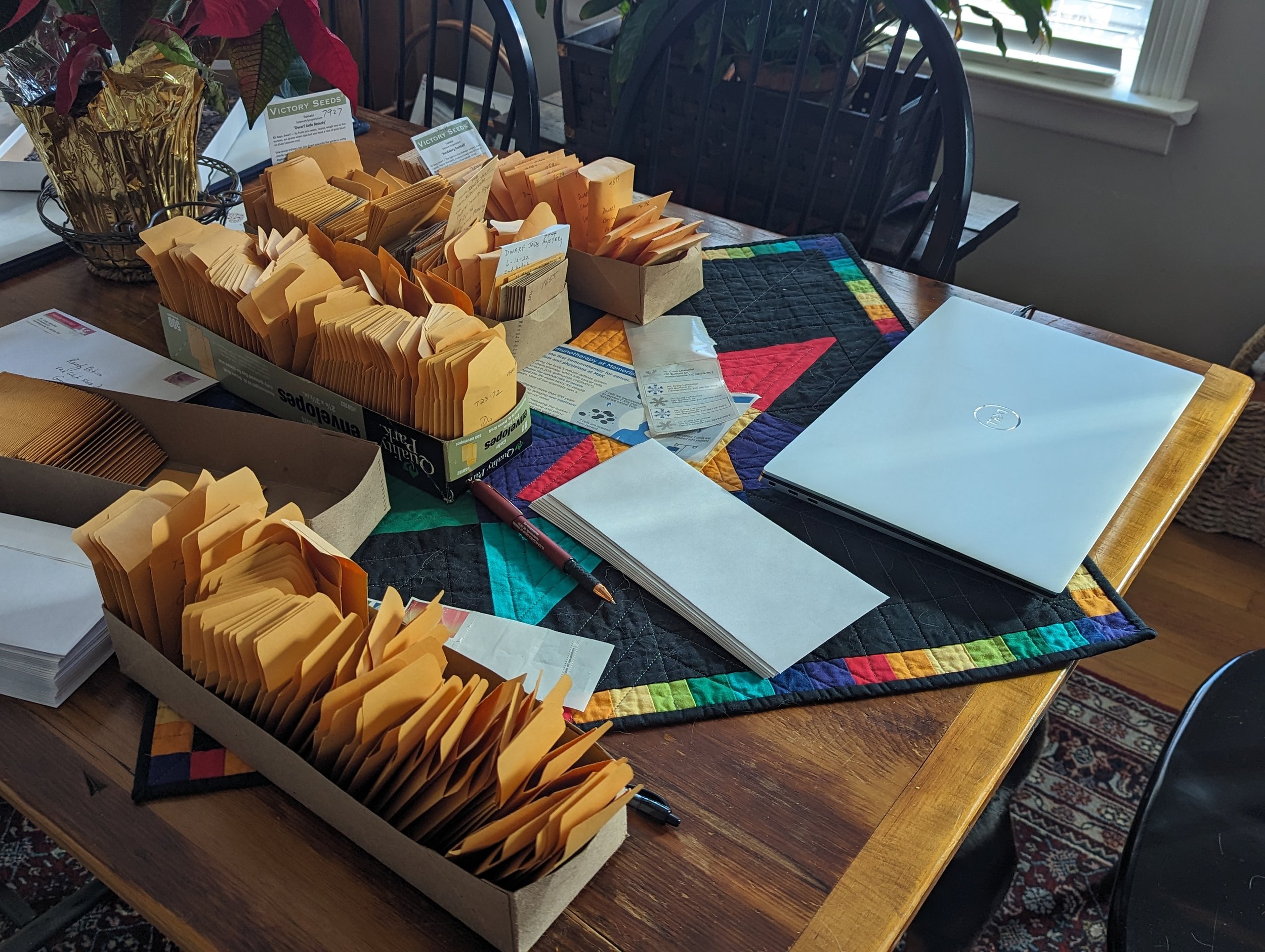The Storm
2 of our pines that represented the border between our house and our neighbor's house. One other of these went down in the back.
Sue woke at around 4 AM on Friday, September 27. Wind, the thumps and cracks of trees falling, the torrential rain and gusty wind caught her attention. We got up at first light to see Helene in action. Winds of 70 mph with higher gusts and horizontal rain made for a frightening view. We lived through Fran in 1996 when in Raleigh, which happened at night. This was our first observation of such a storm in the light of day. The gentle little waterway at the end of our street, Shaw’s Creek (which feeds into the French Broad) was up to our neighbor’s fence and had large waves. When we opened the door, we could smell pine.
By 10 o’clock it was all over and the sun started to peek through. We lost power in the very early morning. We realized we were SO LUCKY. The dozen or so trees that fell all went outward from our property into neighboring yards. We had a gas stove, and a gas hot water heater. We had a bit of phone service - very slow, but texting, phone calls, and if patient, some websites for gaining news. It turned out that our little area of Laurel Park received over 20 inches of rain between Wednesday and Friday. That explains our back yard being a marsh, our driveway a small river. Yet by some miracle we experienced no water damage inside, no exterior damage to our home.
Once we got out and took a walk down our short street and saw the instances of huge trees broken or twisted off, or completely uprooted - once we talked to neighbors and realized that on the next street over, half a dozen trees fell onto a house, puncturing the roof in several places. The family made it out safely and were sitting in their truck from the dark of very early morning, in the height of the storm.
Trees torn apart at the end of our street in the yard of the corner home
Our daughter and her boyfriend joined us a few days later, and the four of us hunkered down and tried to make sense of this storm. News reports were horrific - places not far from us, such as Chimney Rock, experienced unimaginable damage. Hot Springs, Asheville, Black Mountain, Saluda, the Blue Ridge Parkway, Swannanoa - missing people, folks swept away, all access roads destroyed. Even now we don’t have a clear picture of the extent of horrific damage.
Finally, the reports of disinformation being reported here and there were infuriating. Disruptors, those that got off on spreading smears and lies - I simply don’t understand this type of thing at all. I have no concept of what makes certain people do this.
So here, on a sunny Tuesday morning, as we wait to go to get our flu and COVID boosters, I am listening to our superb local radio station WNCW as they intersperse great music with critical information on sending help where aid is needed. Later, when we go out into our yard, we will continue to see the helicopters and drones. We will hear the chainsaws competing with the birds as the soundtrack to this disaster. When we head out on errands, we will be patient as we go through intersections with no traffic lights due to yet to be restored electricity. We got our own power back on Friday night on October 4, along with internet. We will be in lines of traffic with utility repair trucks and tree cutting and removal services. We will be patient - and we will be thankful. We were only very slightly disadvantaged, relatively speaking. We will never forget this event, as we never forgot the horror of Fran in Raleigh in 1996.
Post storm - the few things in the garden
The Garden
It is not easy to talk about gardening when so many are still struggling horribly, so this will be short. In the pic above, you can see the two quartets of bales, front - both contain plants from very late planted experiments and crosses. The right bale - front right is a potato leaf selected from planting crossed Cherokee Chocolate seed. It will likely not fruit - a hail storm removed the growing tip and it is just starting to bud, as well as battling septoria (as they all are). Right front is a very special plant - Sun Gold hybrid X Captain Lucky (which I am calling the Captain family). I will show pic of the developing fruit, see below.
Right bale, rear left is another hybrid - my cross of Cherokee Purple onto a flower on Dwarf Choemato X Dwarf Walter’s Fancy hybrid - this one is looking good and is also pictured below. Right bale - rear right plant - is a regular leaf selection from the crossed Cherokee Chocolate seed. There are some small oblate fruit, so it may make it.
Fruit on the Sun Gold F1 X Captain Lucky plant - the new Captain family. There are 16 tomatoes coming along, so I will have a decent saved seed to distribute.
Fruit on the Cherokee Purple X (Dwarf Choemato X Dwarf Walter's Fancy hybrid) plant - this is the Triply family.
The left hand group of bales has 4 plants from F2 seed from Dwarf Zoe’s Sweet X Dwarf Walter’s Fancy - the new Peppy family. I am growing 2 chartreuse dwarfs, 1 variegated dwarf with normal green leaves, and 1 amazing find - variegated chartreuse leaves. I’ve put that one into a 2 gallon plant so that I can keep it alive in the garage when frosts are forecast. Maybe I can bring it along into next spring, by taking new cuttings if needed. There are small fruit on one of the chartreuse, and on the variegated. Below is the variegated chartreuse plant.
This is the "needle in a haystack" combination - a variegated chartreuse dwarf?
About 8 tall trees fell outward beyond our back fence. We have a completely new view from our back yard of David Mountain.




































































